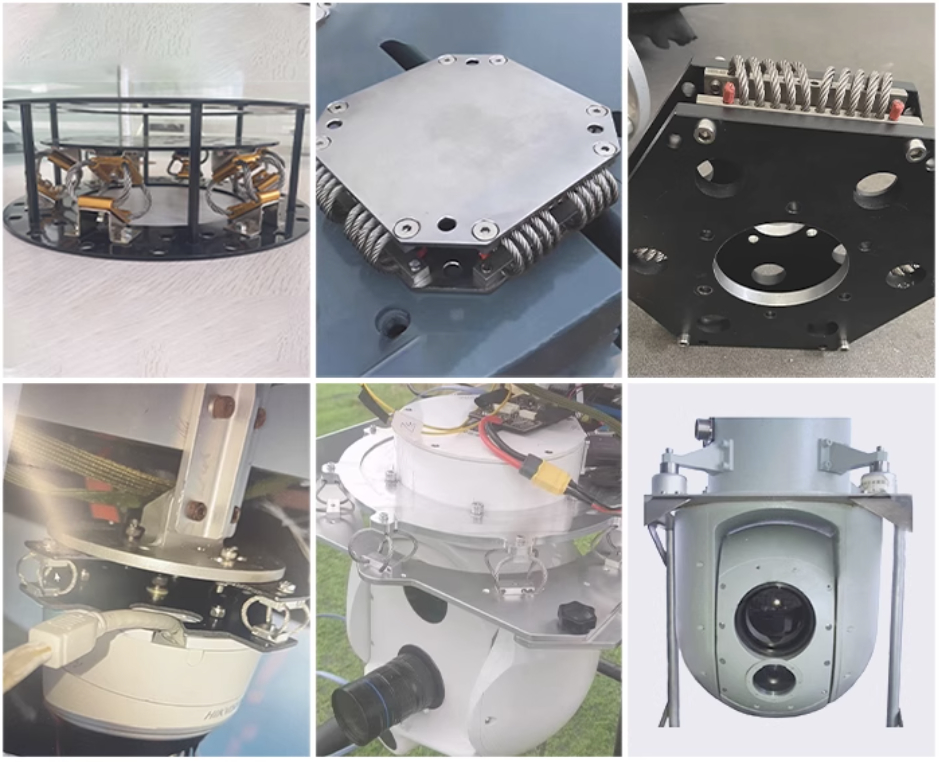SWC-88 Vibration Isolation Platform
Product: SWC-88 Vibration Isolation Platform Load Capacity: 0–55 kg Material: Made of 6061 aerospace-grade aluminum alloy and stainless steelFeatures: Anodized surface treatment, corrosion and rust resistant, lightweight, easy to install, and highly stableApplications: Suitable for various vehicle-mounted shooting systems, aerial photography, communication devices, electronic sensing equipment, mobile electronic instruments, surveillance cameras, camera jibs, and other equipment.
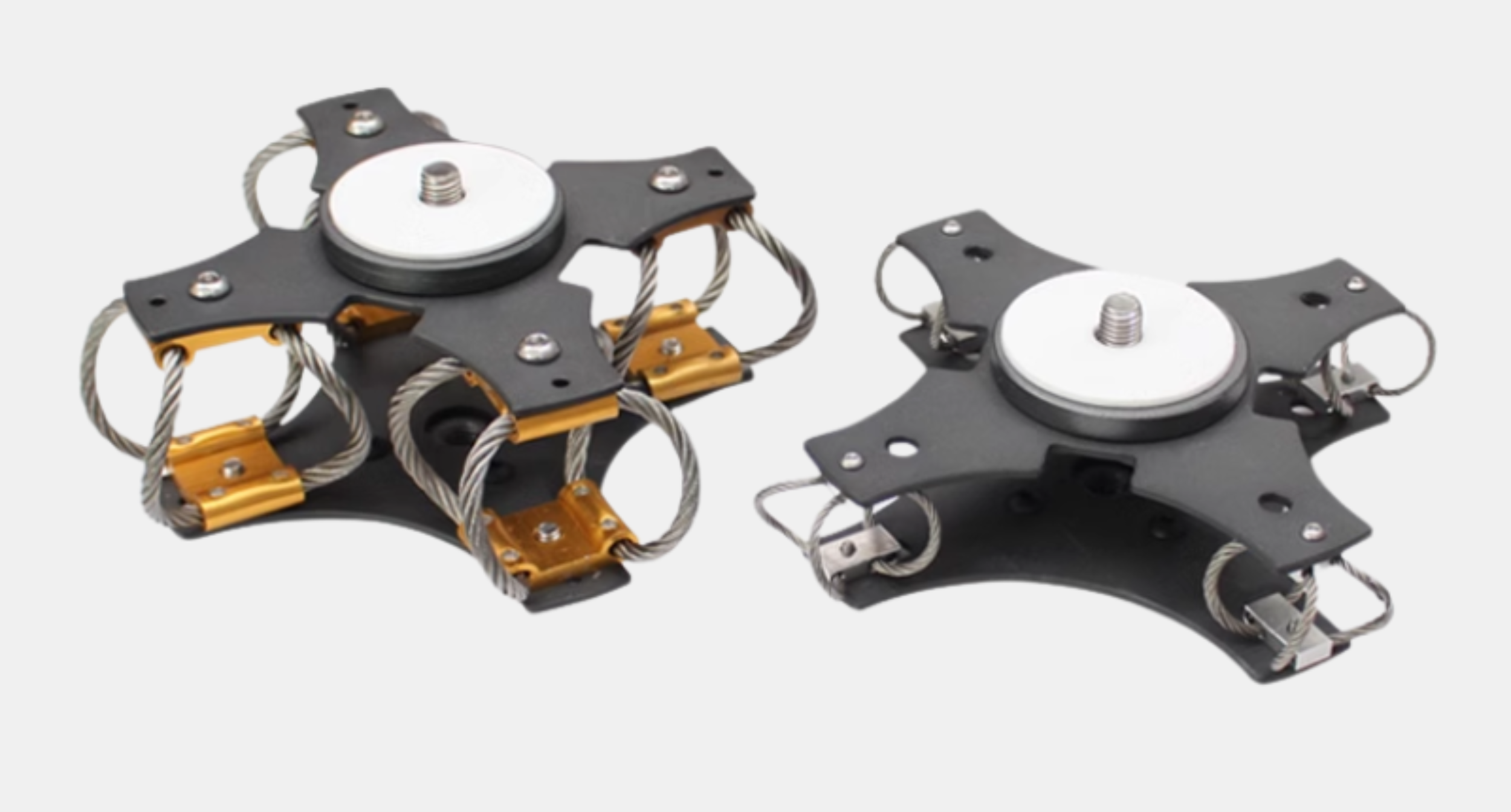
The SWC-88 vibration isolation platformfeatures upper and lower plates made of 6061 aerospace-grade aluminumwith an anodized surface finish. Paired with wire rope isolators, it offers an attractive appearance, long service life, and excellent vibration isolation performance.It supports various models of wire rope isolators, with awide load capacity range (0–55 kg), making it suitable for vehicle-mounted cameras, aerial photography, communication devices, electronic sensors, mobile electronic instruments, surveillance cameras, camera cranes, and more. Customization of appearance and load parameters is also available according to customer requirements.

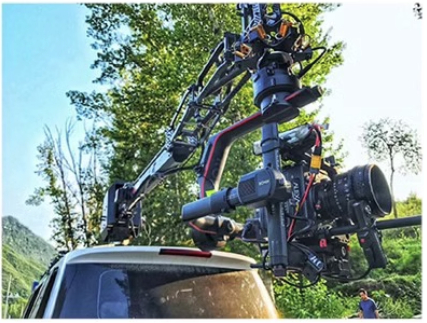


Why is a vibration isolator head essential for vehicle-mounted gimbals?
In vehicle-mounted environments, equipment is exposed to engine vibrations, road bumps, braking impacts, and more. A vibration isolator head filters out these disturbances before they reach the gimbal and lens. An efficient isolator head can attenuate vibrations across multiple frequencies—such as low-frequency bumps and high-frequency resonance—ensuring smooth image output. It also reduces the load on gimbal motors, preventing overheating and excessive wear, thereby extending service life. Isolator heads are critical components in car-mounted filming for commercials, documentaries, and live news coverage.
How do wire rope isolators enhance the stability of gimbal cameras?
Wire rope isolators use high-strength stainless steel cables arranged in a helical structure, offering excellent multi-directional vibration damping capabilities. They effectively absorb vibrations and shocks from drones, moving platforms, or handheld operations, reducing the risk of image blur and structural fatigue. Especially suitable for high-frequency and long-duration shoots, wire rope isolators provide superior fatigue resistance and maintain stable performance even under extreme temperatures or harsh weather. Compared to traditional rubber damping solutions, wire rope systems are more durable, offer linear damping performance, and significantly improve overall shooting stability and equipment lifespan.
Why are suction-based stabilizers ideal for dynamic shooting scenarios?
Suction stabilizers securely mount gimbals or cameras to car bodies, windows, or flat metal surfaces, offering a flexible setup for mobile filming. Modern suction stabilizers typically include multi-layered shock-absorbing systems such as vibration-damping pads and micro-vibration isolation modules. These features help counteract sudden jolts from acceleration, braking, turning, or uneven roads. Besides enhancing mounting security, they significantly improve image stability, making them ideal for tracking shots, outdoor scenes, or high-motion filming. Their easy installation and reusability make them especially valuable for rapid deployment scenarios.
Why is the "Black Arm" damping system vital for professional vehicle filming?
The “Black Arm” is a multi-axis suspension damping arm specifically designed for heavy camera setups. It combines mechanical springs, hydraulic dampers, and elastic components to counteract various motion forces during vehicle movement—such as pitch, roll, vertical impact, and torsion. Its flexible design maintains high camera stability even during off-road driving, high-speed runs, or aggressive turns. Not only does it eliminate camera shake and frame jitter, but it also protects expensive camera equipment from violent impacts. It’s a must-have for action filmmaking, automotive commercials, and extreme sports cinematography.
How do damping systems improve performance during jib or crane arm shooting?
When using jibs or crane arms for dynamic shooting, operator movements, structure recoil, or ground vibrations often transfer to the camera, causing instability. By integrating dedicated damping mechanisms into the jib system, vertical, lateral, and rotational shocks can be significantly reduced. This results in smoother pans and tilts, more professional footage, and reduced mechanical stress on components, extending the system’s operational life. Whether for event coverage, film production, or multi-angle motion shots, vibration damping systems enhance both operator control and video quality.
Why are stainless steel adapter plates and aerospace-grade aluminum commonly used in vibration isolation systems?
Stainless steel and aerospace-grade aluminum each bring unique advantages to vibration isolation systems. Stainless steel provides excellent mechanical strength, corrosion resistance, and heat tolerance, making it ideal for adapter plates that ensure strong and durable mounting. Aerospace-grade aluminum alloys like 6061-T6 or 7075-T6 offer high strength-to-weight ratios, excellent machinability, and vibration resistance—ideal for structural components where weight is a concern, such as drones or lightweight vehicle setups. When combined, these materials enhance the structural strength of the isolator while optimizing weight and environmental adaptability, ensuring accuracy and safety in demanding shooting conditions.
SWC-88 Type Size Parameter Table
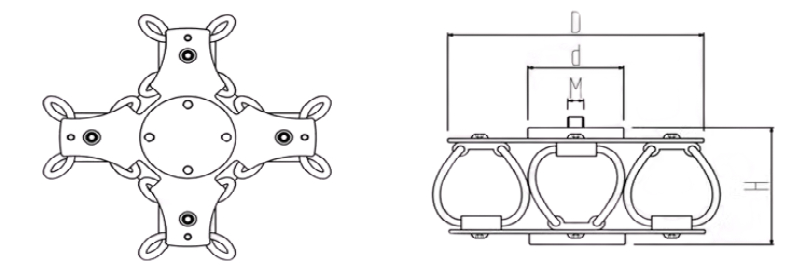

Customized Wire Rope Vibration Isolation Platform
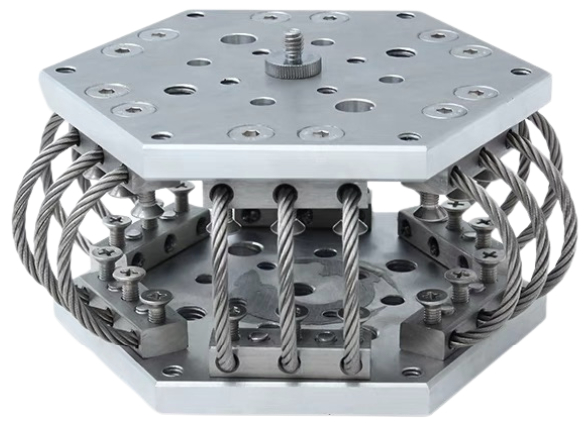

Drone Gimbal Vibration Isolation Platform
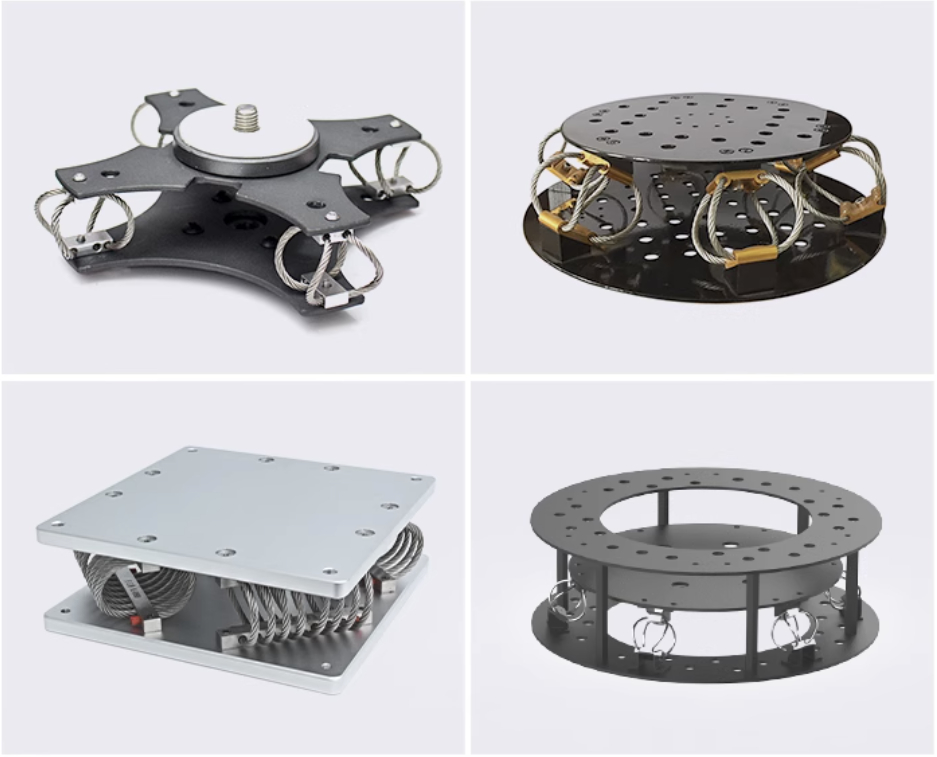
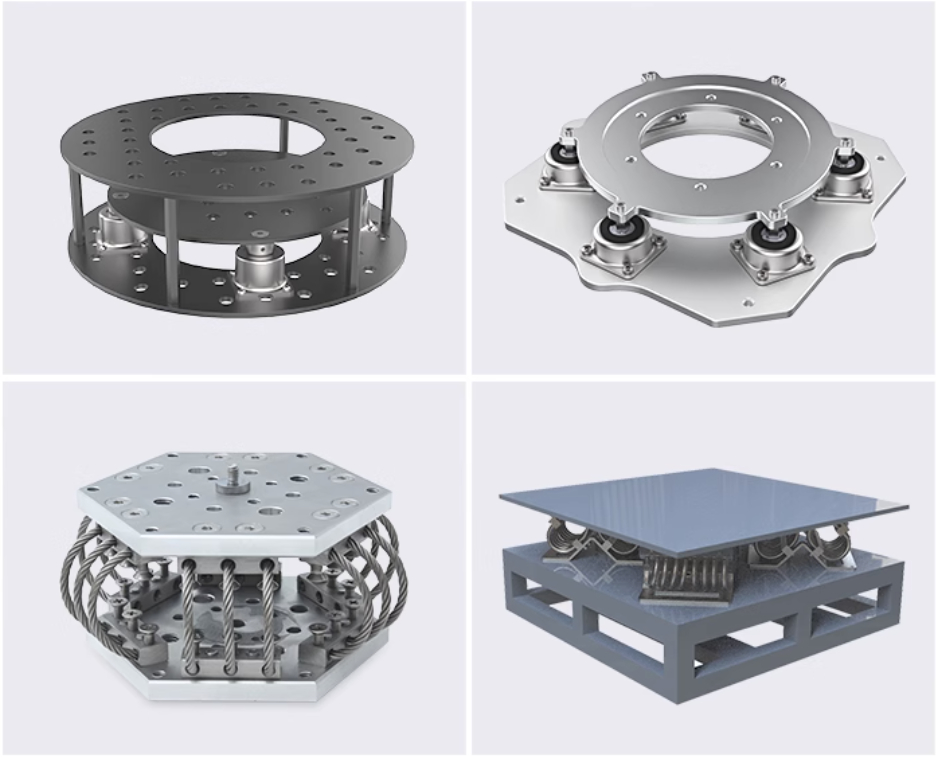
-Wide Range of Applications-

